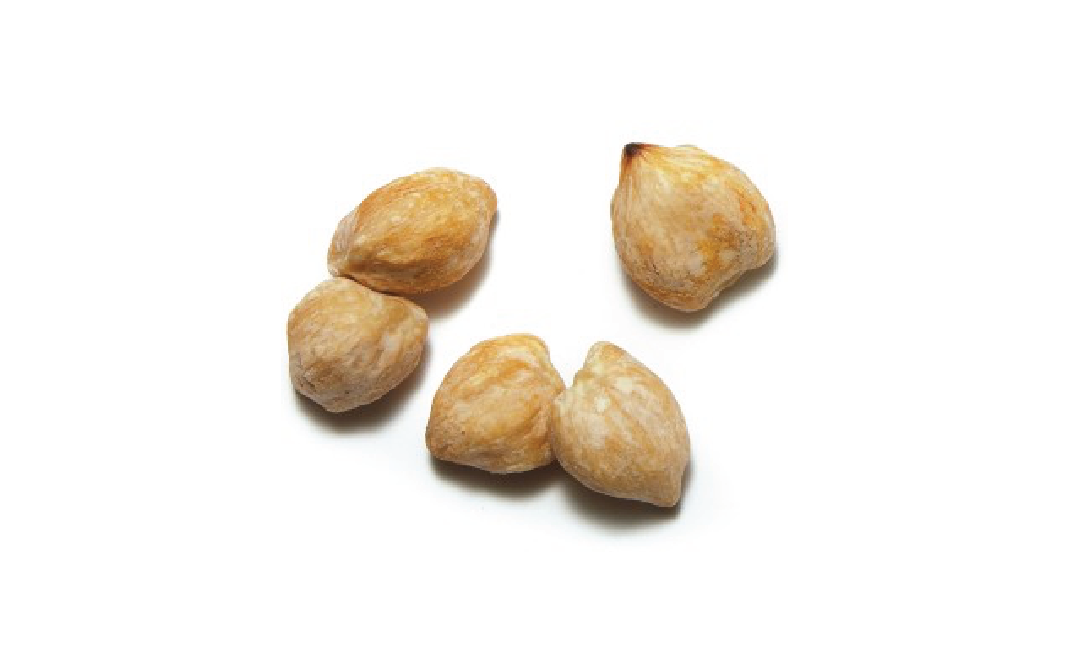


Always choose the candlenuts which are light beige/cream coloured. Candlenut should not be brown in colour.
Candlenuts have substances like phorbol and saponins, so large quantities of these candlenuts should not be consumed raw otherwise side effects like nausea, violet vomiting and stomach cramps may be experienced.(2)
- Disclaimer
"Information here is provided for discussion and educational purposes only. It is not intended as medical advice or product or ingredient review/rating. The information may not apply to you and before you use or take any action, you should contact the manufacturer, seller, medical, dietary, fitness or other professional. If you utilize any information provided here, you do so at your own risk and you waive any right against Culinary Communications Private Limited, its affiliates, officers, directors, employees or representatives.”
Description
Candlenut is actually a nut of a flowering tree in the genus Aleurites belonging to the family Euphorbiaceae. They are a relative of Macadamia nuts and resemble them in appearance and in texture. Candlenut have a hard furrowed shell and the nuts are yellow, waxy, and brittle, much like their Macadamia cousins. It is native to Indo-Malaysia region. It is grown in the tropical and subtropical regions of the world such as Malaysia, Indonesia as well as some parts of Australia. They are frequently used in Malaysian and Indonesian cuisines. Candlenut should not be eaten raw as it is mildly toxic.